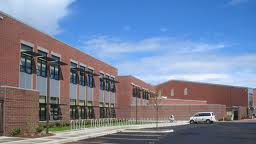What’s the Matter with Middle School?

Answer: Hormones. That’s true, but not the whole predicament.
Middle school has issues. The problem is often folded into a larger, if illusory, “problem” of the U.S. public school system (Read Diane Ravitch’s heroic refutation of the bleat that public schools are failing). This is a mistake. The trouble with middle school cuts across school sector.
My 12-year old attends a private school. His school doesn’t have to teach to the test or the Common Core, or manage classrooms of 30 children (not that large class size necessarily correlates to bad academic outcomes: classrooms in the revered Singapore system are large, but students perform well on the cross-national tests that grievously orchestrate the educational cosmos).
Even so, the prevailing middle school pedagogies aren’t great. They are either too soft or too hard. The choice in my area seems to be between a strategy of putting the middle school brain on ice—consigning it to a holding cell for a few socially tumultuous years—or bombarding it ruthlessly with math, forcing it to wrestle with ever more advanced algebra for ever more hours. Intuitively, neither seems right.
My concern is the diminishing jouissance attached to the life of the mind as children progress through school.
Imagine a funnel, and at the wide mouth of the funnel are all three year olds. They start with boundless, natural curiosity. It takes a lot to make a three-year old mordant, or intellectually jejune. They go through elementary school and get socialized, which is a good thing. As the curiosity gets corralled, however, it diminishes. Bits of it wander away and get lost, or are a casualty of order. Inordinately freewheeling curiosity becomes incompatible with school. It’s not supposed to be this way, but, in some cases, it is. Curiosity must have limits, or the classroom is chaos.
At middle school the funnel narrows more. The pruning of joy is more ruthless. The soul of school becomes more bureaucratized. Days to vacation are counted. “School” verges closer to “work.”
If the student is lucky, the funnel reaches perhaps its narrowest point in middle school, but then becomes an hour glass. Once the student gets to college, graduate school, or high school, their life of the mind flourishes, or revives. But for some, and perhaps many, students, the funnel just gets narrower as they progress. The renaissance of joyous learning doesn’t occur. They attend colleges that are more concerned about providing “lazy river” amusements and a sushi chef than intellectual nourishment.
So what’s wrong with middle school?
The school day starts too early, for one thing. Middle school disrupts circadian rhythms. I have to wrest my child out of bed at 7 to make a class that begins at 8, promptly. This wasn’t a problem in elementary or preschool. Adolescents need sleep. While toddlers are up at 6 am, their parents sitting bleary-eyed on the floor with Thomas trains to amuse them because preschool doesn’t start until 9, the middle schooler, who needs to sleep later, is pried out of bed before his time. Everything is backwards. Preschool should start at 7:30, and end in time for a long afternoon nap; Middle school should start at 9, and go later.
Middle schoolers have restless physical energy. Instead of providing ample opportunities to expend that energy, they squeeze themselves into desks and sit for an hour straight.
As for content, my son’s middle school, and it’s not the only one, is devoted philosophically to notebook fascism. They’re obsessed with study skills. In my day, study skills were for remedial students, but there’s a pervasive belief today—supported by one body of research—that the one thing you can teach in middle school is how to be organized, study, and take notes.
It’s Staples’ dream come true—a pedagogy based on office supplies.
The homework. Ah, the homework. It’s the worst of all worlds: time-consuming but too often pointless and unengaging. I’m not generically against homework, as some parents and scholars are. But homework that involves memorization, especially of material that in the technological age is so easily discovered as needed, makes me bristle that the school has hijacked the few hours of weeknight leisure to assign this stuff. I’m usually the first to lambast Google. But, this is the pedagogical-shattering advantage of the technological age: the ready access to facts. Students memorized capitals in the past because they weren’t going to have instantaneous access to that information any other way.
A variant of the “piled higher and deeper” but pointless homework is the school that assigns loads of homework simply as psychological certification for parents that it is a tough place—more like Southeast Asia. This amounts to hardness for the sake of hardness, for the sake of convincing parents that they’re at a good public school.
Speaking of writing. There isn’t any. Or at least not nearly enough. Again, this seems to cut across public and private school systems.
I’ve looked at other middle schools but they don’t seem appreciably different. While eclectic philosophies abound at the elementary level, and different curricular specialties abound at the high school level, everyone seems to be in agreement that there’s not much to do about middle school, really, except get through it.
There is another theory, that sports are destroying high school. This is a theory that I might have endorsed as a 20-something childless person who knew nothing but thought she knew something about kids, and a theory that I cannot endorse as a 40-something parent, who knows little, but slightly more. Because the one quasi-educational system that I do believe in for my son, at least at the middle school level, is his sport–swimming. He swims outside of school for a nationally-recognized team, and his team has precisely the philosophy that I wish middle school did.
His sports “school” asks much of him. Somehow, it manages to take the minute tedium of mastering small details to strive toward perfection as something that is well worth doing, and doing repeatedly. They manage to enchant the hours of practice–the athletic equivalent of “study skills”—or at least imbue them with a purpose and mission that the kids embrace. Why doesn’t the same thing happen with school assignments?
His school school is queasy on competition, and excellence. His sports school inculcates graciousness and an understanding among swimmers that while you’re most likely not going to be the fastest, you try. Trying matters, deeply. Rather than being the consolation prize (“oh well, you tried!”), it is the prize, and it is the competition, both.
When kids succeed, coaches don’t make a huge thing of it; when they fail, they don’t make a huge thing of it. They model dignity in the face of both success and defeat, and they integrate failure—now a much-beloved object of educational theory—as the likely outcome.
The team instills a sense of community that is grounded not in rhetoric about everyone being tolerant and “working together,” but in a bunch of 12-year olds actually doing that rather than talking about it, even though swimming is mostly an individual sport.
Far from destroying the school, this sport has out-achieved it. It quickens the passion for detail, values, devotion, and aspirational zeal that the American middle school has not.





